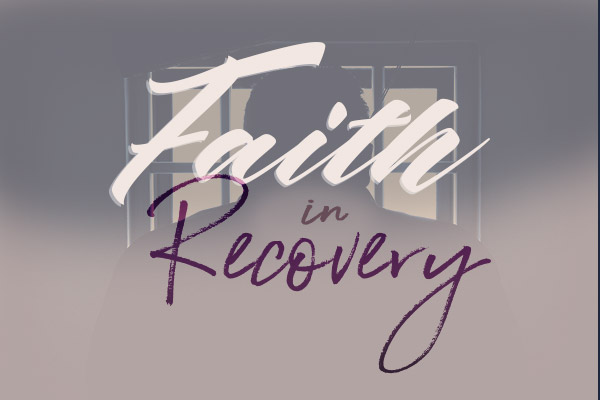
Faith in Recovery Pt. 10: Faith and Addiction in Prison
- By WRN Editorial Staff --
- 27 Sep 2017 --

Are Prison Drug Rehab Programs More Effective with Religion?
“You can tell a lot about a civilization by the quality of the people found in its jails.”
David Gerrold
“No prison can shut out God.”
J.F. La Harpe
There are over 2 million people incarcerated in the United States. Of that number over 70% will return to prison within 5 years. The number one reason for their recidivism is drug and alcohol abuse. While the world after prison is a struggle, inmates also have to deal with addiction while locked up. Over 75% of prisoners are dealing with substance abuse problems. That is nearly 1.5 million people.
There has been ample evidence prison is not the place to become sober. But what work can be done to improve? 21 out of 50 states in America have religious-based recovery programs. While only a fraction of those who are seeking treatment are able to receive it and there needs to be more research into effective programming, there are significant demonstrations of faith being incorporated into prison treatment programs. Here is a holistic look at the incorporation of faith into drug treatment programs in the United States.

Faith in Recovery Pt. 10: Faith and Addiction in Prison[/tweetthis]
Benefits
World Religion News reported previously the majority of government funding for drug and alcohol addiction goes to religious organizations. This includes prison rehabilitation programs. Both through government funding and independent volunteerism religious ministries are the most prolific in providing opportunities to fight addiction. There is some evidence it is working. One-third of prisoners who participate in religious activities exhibit lower rates of recidivism. Since recidivism is largely caused by drug and alcohol use, finding the most effective programs is essential to making correctional facilities rehabilitative rather than exclusively punitive.
While there needs to be larger, widespread research comparing secular and religious addiction programs, there are several notable examples. The Men of Valor program in Tennessee has grown rapidly in 4 years. Part of its growth is due to its impressive numbers of success. While the national recidivism is at 70%, those who graduate from Man of Valor have less than 10% recidivism making it “the most successful prison reform program in Tennessee history.” It focuses on integrating religious instruction with teachings about social justice and life after prison.
This is a pattern of curriculum for successful programs. The integration of religion, substance abuse recovery, and how to live after prison. The New Life Behavior Ministry uses trained volunteers to teach life skills. The planning of life after prison is an important aspect of programs. While religious programs have communities that can provide aid and assistance, prisoners will need to know how to operate in extremely difficult circumstances while being sober.
Disadvantages
While there are several noteworthy test cases demonstrating the effectiveness of infusing spirituality into prison programs for rehabilitation there are some concerns. The first is the lack of available options for drug rehab programs. An atheist or agnostic might become discouraged from joining a treatment program because it seems too religious. In California an inmate won a settlement for being forced to join a religious treatment program even though he was an atheist.
This creates a unique bind. Either someone cannot take a drug treatment program or violate their religious freedom. Drug treatment programs, beyond providing help with addiction, can help reduce a prison sentence, offer the potential for better accommodations, and may come with additional privileges making it highly desirable. The effect is two-fold. First, people may be getting treatment that may not be effective because it requires a belief in a higher power or specific religious denomination. Second, there is the opportunity cost of taking the space. If someone who does not believe takes the spot, it removes the possibility for a believer, where treatment can be effective, to gain access.
Shari Webber-Dunn, a Kansas inmate, is suing the state. She is arguing Christianity was forced upon the inmates, including herself, even after she objected. Some groups have called her move a PR stunt.
This is not only with obvious forms of incorporation of drug treatment programs. Alcoholics Anonymous and Narcotics Anonymous have been found in court to be essentially religious programs. Even though both practitioners and the programs themselves claim that being religious is not a prerequisite to entering the programs, states have been found to violate the First Amendment for requiring that inmates attend programs in prison without non-religious alternatives. While some institutions are beginning to integrate recovery programs like SMART Recovery, there are not enough.
This is not always an option. The forcing of released inmates to attend 12-step programs as part of their parole becomes a form of coercion. Imagine the widespread hostility that would occur if prisons forced members to attend drug recovery programs that required members to accept the belief that there was no the God.
The belief in God does not automatically mean an elimination of illicit behavior. The phrase “jailhouse conversion” means an inmate who converts due to the desperation of circumstances and powerful influence that religious institutions have inside. The implication of an inmate not choosing faith by itself but due to external circumstances could influence how the religion is viewed. A study saw that religion may actually encourage crime for prisoners. The reasoning being that the inmates used “elaborate and creative rationalizations in the process and actively exploit religious doctrine to justify their crimes.” Given the high recidivism rate and a high number of converts to religion in prison, it is unclear what impact the religion has in stopping substance abuse. Therefore, the automatic inclusion of religion into programs does not mean they become effective.
Religious recovery programs might be seen as a panacea by prison administrators because in their ability to occupy the time of inmates and the prospect of mollifying their behavior. This could induce a transfer of reliance from substances to faith. A new set of habits and thoughts to replace the old ones. It may just be something that gives the inmates “something to hold on to.”
There is no silver bullet to fighting addiction in or outside of prison. Approaches must be diverse enough to handle the unique circumstances of how addiction affects each person. There is clearly an overwhelming problem of substance use by inmates. All options must be used because there is clearly not enough support. There needs to be a growing amount of secular options. There also needs to be more financial support of what makes spiritual programs effective. These should not work in opposition but together with the dual mission of helping those that struggle to help themselves.



















